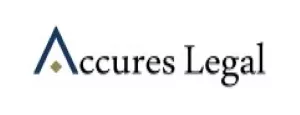Introduction
India, a mega-diverse nation with rich flora and fauna, is home to at least 10 percent of the world's species but is not exempt from issues of extinction of rare species or degradation of its bio-diversity. As a signatory to the Convention on Biological Diversity (CBD), which recognises states' sovereign rights over their biological resources, India enacted the Biological Diversity Act, 2002 (BDA) in 2003, which is regulated and functionally advised by the National Bio-diversity Authority (NBA), with the main objectives of conservation and sustainable use, and, most importantly, to ensure fair and equitable sharing of benefits arising from these resources.
The role of the Biological Diversity Act in intellectual property rights arises when one makes an unauthorised use of the indigenous biological resources to earn profits by way of IP commercialization. To prevent the exploitation of these resources and to promote the equitable sharing of benefits via patent protection, section 6 of the Act makes it mandatory for the applicant to get prior approval from the NBA.
When An Approval is Sought?
Approval is sought in two conditions:
- if origin of the biological resources to be used is from India; and
- if the invention is based on certain materials that fall under the definition of biological resources under the BDA. Under the BDA, biological resources are plants, animals, micro-organisms, their parts, genetic material, and by-products that have actual or potential use or value.
It is to be noted that value-added products based on biological resources and human genetic material are excluded under the category of biological resources.
if a patent is to be obtained for the commercialization of matters such as drugs, industrial enzymes, food flavours, fragrance, cosmetics, emulsifiers, oleoresins, colours, extracts, and genes used for improving crops and livestock through genetic intervention, and if one or more biological resources were used in the production of the same, then seeking NBA approval for such biological resources becomes a must.
Process of Seeking Approval
Indian Patents Act, 1970 makes it mandatory for the applicant to disclose the source and origin of the biological materials, and the Patent Rules, 2003, require the application to be submitted before the patent office accompanied by a declaration on Form-1 stating that the applicant would comply with the requirement of procuring approval from NBA before the grant of a patent.
A person seeking approval from the NBA must make an application on NBA Form 3 through ABS (Access and Benefit Sharing) e-filing with INR 500 as a fee. The authority, after analysing the application, ordinarily concludes the matter within 90 days.
Information and Details Required
The specific details required when submitting a request for NBA approval on Form 3 are as follows:
- Is it biological resources or associated knowledge that is accessed, or both?
- Details about any traditional knowledge used in the invention and any individual or community who possesses the traditional knowledge.
- Nature of biological resources (plants, animals, or microorganisms), common and scientific names, parts of biological resources used, their names and source of access, (wild or cultivated, market or trader, repositories or institutions, or any other), name and contact information for the geographical location where the biological resources used in the invention were gathered, and information about the institution where R&D activities were carried out.
- Specifics on any economic, biotechnological, scientific, or other benefits that are intended or may accrue to the applicant as a result of the invention's commercialization.
Further, in tune with the 3rd objective of the BDA, a benefit-sharing fee or royalty is imposed on the applicants while using the biological resources for commercialization. In accordance with the provisions of the Nagoya Protocol, the NBA published certain regulations known as the Guidelines on Access to Biological Resources and Associated Knowledge and Benefits Sharing Regulations, 2014 (ABS regulations). It specifies the benefit-sharing ratio, wherein if commercialization of IP is done by the applicant alone, then the range would be 0.2 to 0.1 percent, whereas if the applicant is licensing or assigning the commercialization process to any third party, then the payment would be 3.0 to 5.0 percent of the fee received and 2.0 to 5.0 percent of the total royalty received. Thus, the benefit sharing ratio is decided on the basis of the quantum of sales and not on the quantity of biological resources used.
Any contravention of provisions relating to bio-diversity in the Patents Act, 1970, would lead to a refusal of patent under section 15 of the Act. Also, the wrongful or incomplete disclosure of the source of biological resources would attract both pre-grant and post-grant opposition under sections 25(1)(j) and 25(2)(j) of the Patents Act.
Conclusion
The convergence of biological resources and intellectual property rights is recognized by both the BDA and the Patents Act; and the NBA acts as a watchdog in preventing the unauthorized use and exploitation of resources and also ensures the promotion of indigenous resources that were previously not regulated. The Bio India Biologicals is one such example wherein the export of neem leaves to Japan was regulated by the NBA and a part of the royalty was paid to the biodiversity management committee (BMC) of Amarchinta, Mahboobnagar district, Andhra Pradesh as these neem leaves had been collected from there.
The content of this article is intended to provide a general guide to the subject matter. Specialist advice should be sought about your specific circumstances.



